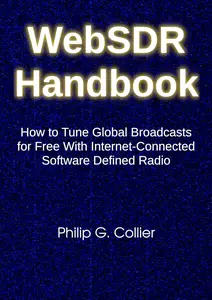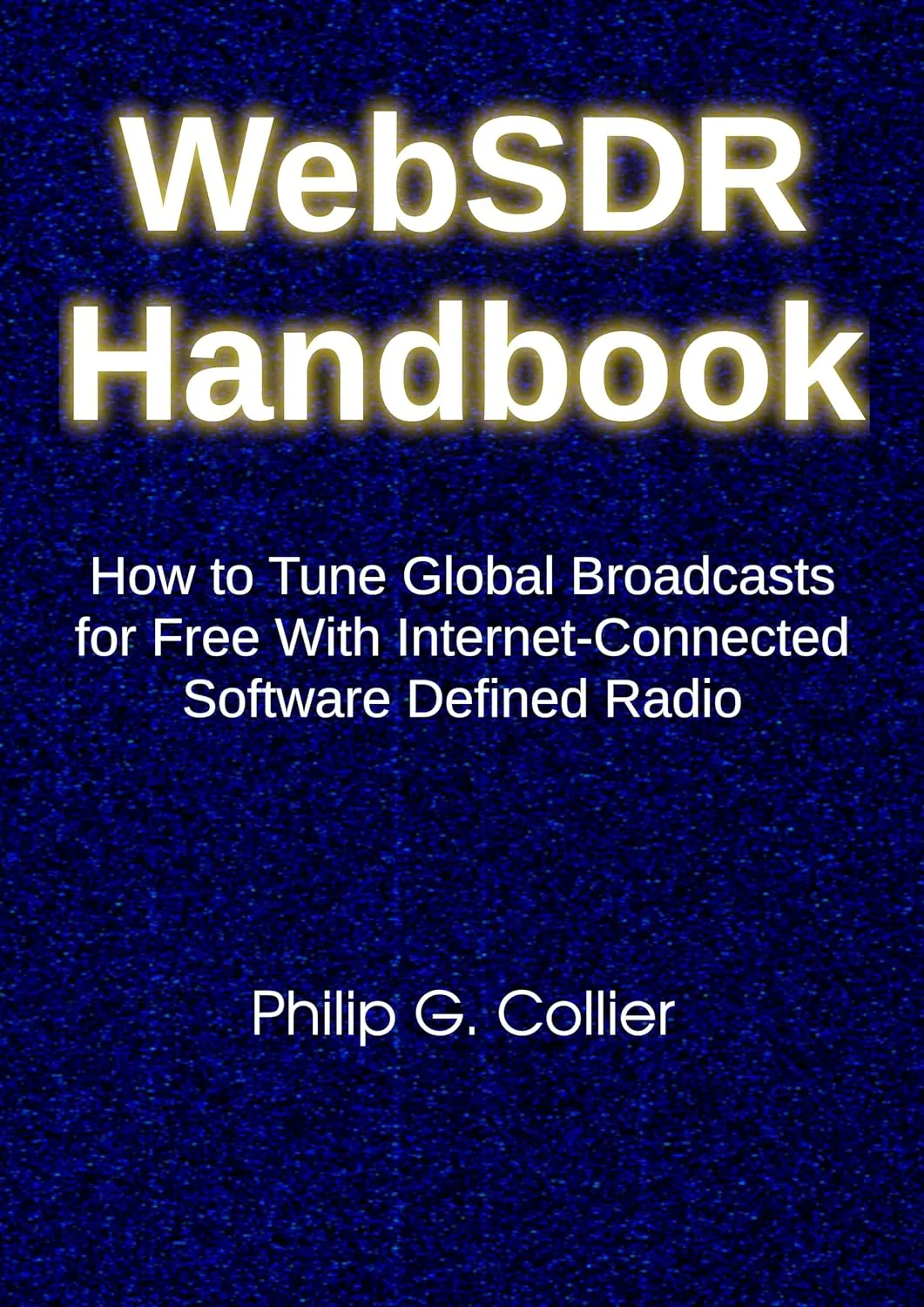WebSDR Handbook: How to Tune Global Broadcasts for Free With Internet-Connected Software Defined Radio by Philip G. Collier
English | April 25, 2024 | ISBN: N/A | ASIN: B0D2QPXJPP | 150 pages | EPUB | 17 Mb
English | April 25, 2024 | ISBN: N/A | ASIN: B0D2QPXJPP | 150 pages | EPUB | 17 Mb
Overview:This handbook explains how to tune in shortwave radio broadcasts or other global communications in your web browser, using WebSDR technology. If AM talk radio in your town gets you down, try some music and features from some far away exotic place. Tune in new sounds via WebSDR! Curious about shortwave listening or ham radio? These top notch receivers are a great way to discover the science and theory behind today's advanced communications.
WebSDRs are a type of Software Defined Radio which picks up radio signals, converts them to digital format, and can stream them to your computer, tablet or smartphone for listening, wherever you are in the world. You don't even need to have your own radio or antenna. Tune in distant stations, heard on high performance receivers on the other side of the world.
Hundreds of WebSDRs are online, operated by volunteer radio amateurs and engineers. They are free to use, and high performance, but can be tricky technology. They are es[ecially useful technology for people who live in noisy environments, with poor reception, high rise apartment residents, and people who live far away from their favorite stations. WebSDRs are also useful for breaking out of censored media bubbles, where local news is censored and foreign broadcasts jammed.
This book is packed with operating tips and good know-how for shortwave listening on the network of WebSDRs.
Chapters:Chapter 1: A Background Never Quiet
How the author makes daily practical usage of WebSDRs to keep up on the news, enjoy interesting cultural programming, and pick up stations too far away from where he lives.
Chapter 2: History of the WebSDR
A chronicle of the events leading up to the emergence of software defined radio and the WebSDR.
Chapter 3: WebSDR Operating Principles
How the WebSDR technology works and how a WebSDR is different from familiar table top or pocket radio equipment.
Chapter 4: Controls and Indicators
A description of the function and usage of all of the buttons, switches, and sliders of the WebSDR interface and how to properly use them.
Chapter 5: Alternative Clients and Decoders
A discussion of some alternative interfaces for the WebSDR besides the usual web interface. Also, a look at popular decoding software for various amateur radio, maritime, and other digital signaling modes (teletype, weather fax, NAVTEX, etc).
Chapter 6: The Universe of WebSDRs
Visiting several of the most popular or high performing WebSDR sites on the internet.
Chapter 7: Upgrades and Alternatives
Upgrades to the WebSDR software for better performance and user experience; considerations of other internet SDRs to use if the WebSDR network ever shuts down or falls into abandonment. Top contenders appear to be OpenWebRX, KiwiSDR, and Spyserver.



